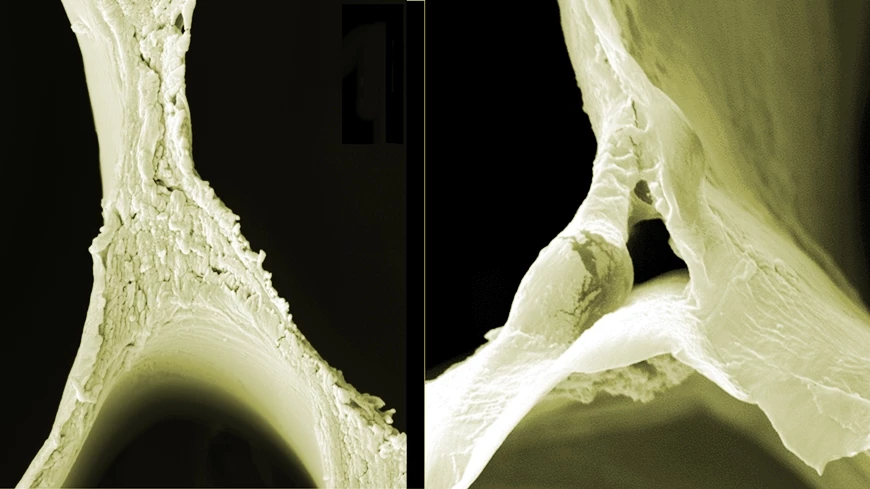There are untold energy sources all around us, if we can just figure out how to tap into them. Swiss researchers have now demonstrated an environmentally friendly way to make spongy wood flooring that can generate electricity with every step.
The material works using what’s called the piezoelectric effect. Essentially, as the material is compressed under mechanical stress, positive and negative charges separate to opposite surfaces, generating a voltage when connected.
If you make flooring out of these materials, the thinking goes, you can harvest energy from footsteps as people walk on them. This principle has been put to work in PaveGen’s pavement tiles and its soccer pitches that power their own lights. Similar energy-harvesting floors instead tap into the triboelectric effect, where electricity is generated through friction as nanofibers rub together.
In new studies, researchers at ETH Zurich and EMPA investigated the piezoelectric potential of a common building material – wood. Normally it’s not flexible enough to generate much electricity, so the team developed a way to give it more give.

They exposed the wood to a process called “delignification.” Lignins are natural polymers that act as supporting structures in the cells of plants, particularly in wood and bark, that keeps them rigid and strong. Removing some of these lignins made the wood much spongier, so it can be easily squeezed then return to its original shape when the pressure is off.
In the first test, the team delignified the wood by soaking it in a bath of hydrogen peroxide and acetic acid. In the second they experimented with a gentler method – using a fungus called Ganoderma applanatum, which rots lignin out of wood.
Both forms of the spongy wood were tested in the lab as a piezoelectric generator. First up was a cube of the material measuring around 1.5 cm (0.6 in) to a side made using the acid bath. This was able to generate around 0.63 V, which could power a small sensor and was stable over 600 cycles. When the team packed 30 of these blocks together and compressed them with about the weight of an adult, it was enough to light up an LCD.

Spongy wood made using the fungus performed even better – a cube the same size produced a maximum voltage of 0.87 V. The other advantage of this method, the team says, is that it’s more environmentally friendly.
The study suggests that this kind of wood sponge generator could be useful as both energy-harvesting flooring materials and as wearable sensors. In another recent study, the team demonstrated other uses, such as wood that glows under UV light.
The research was published in the journals ACS Nano and Science Advances.
Source: EMPA






